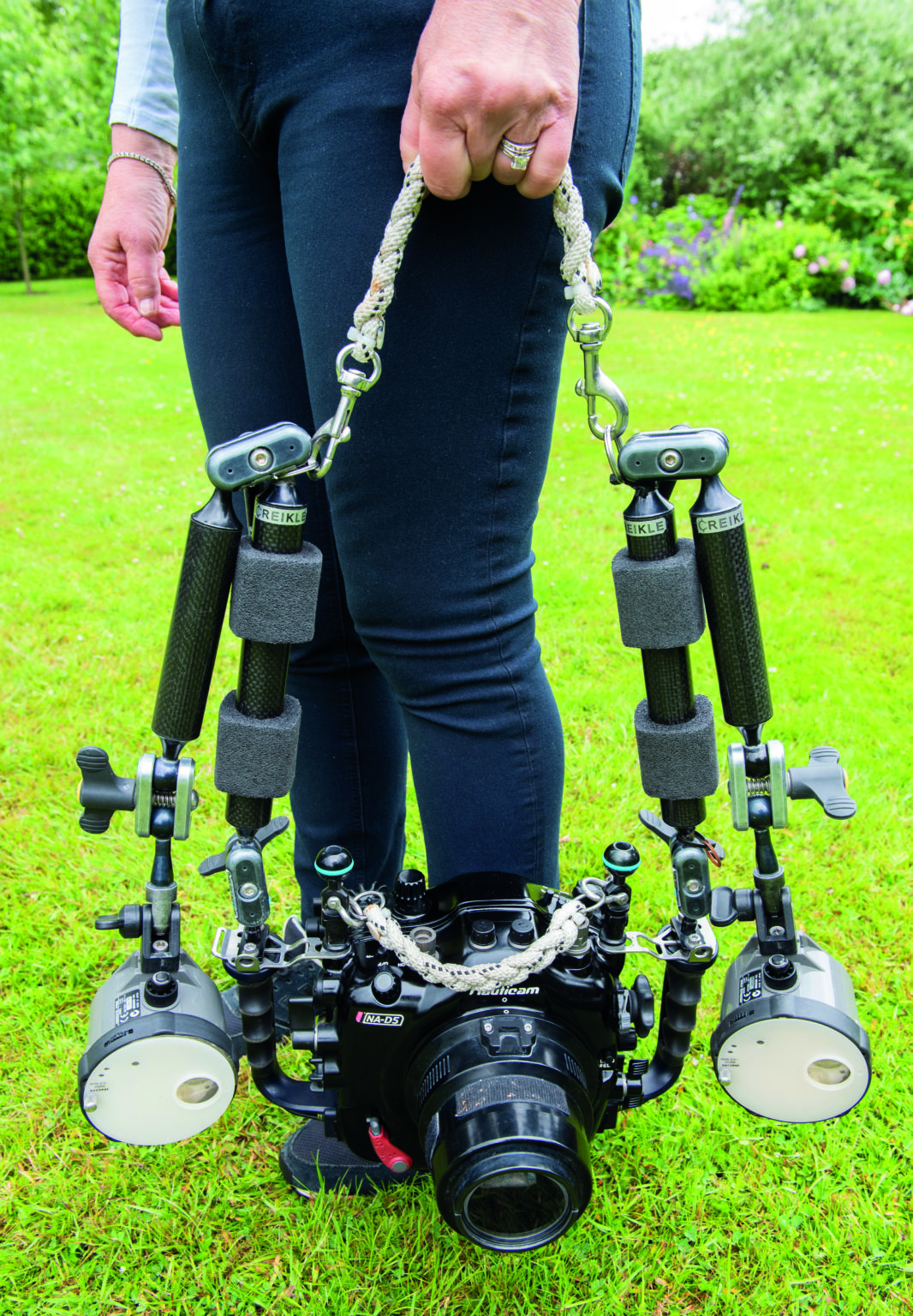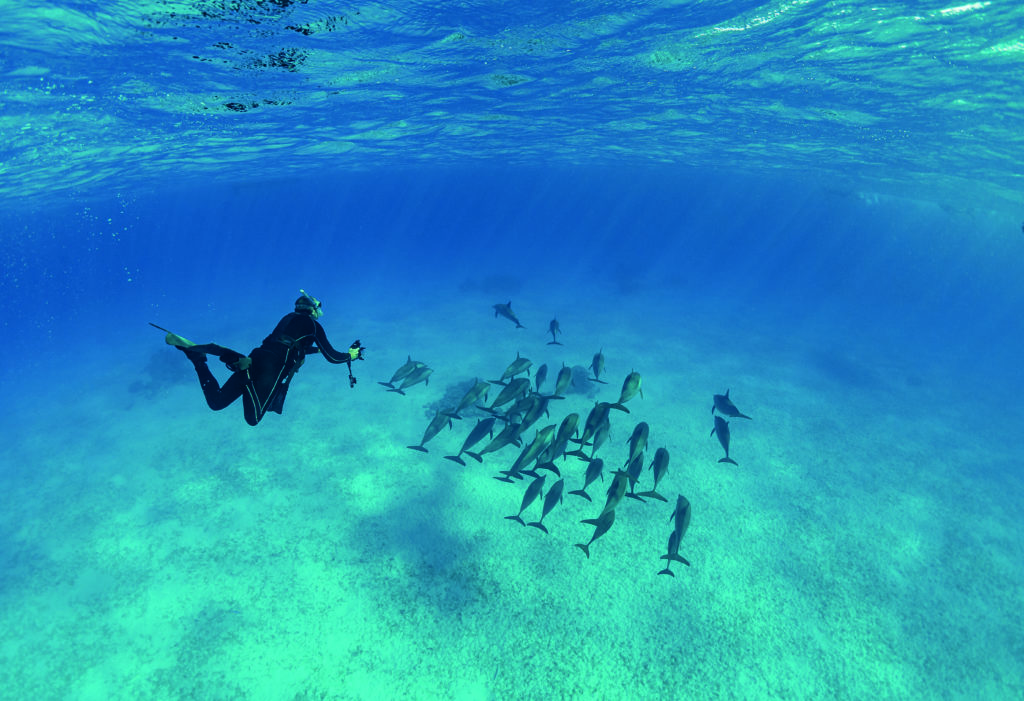We ask our team of photo pros for hints and advice on getting in and out of the water with a camera, and what to do with your camera between and after diving
Martyn Guess
I have always been very careful with my camera rig when getting in and out of the water. This stemmed from my Nikonas film camera days, when on a RIB heading out to the drop-off, I happened to notice my lens had fallen off and was rolling around the deck! I had intended to roll in with the camera!
I always have the camera handed to me, whether jumping in or rolling. I have seen strobes fall off where they haven’t been tightened down, or a last -minute glitch, which the boat boy or you spot as he hands the camera to you, so why risk a flood or a bang on something by going in with the camera?
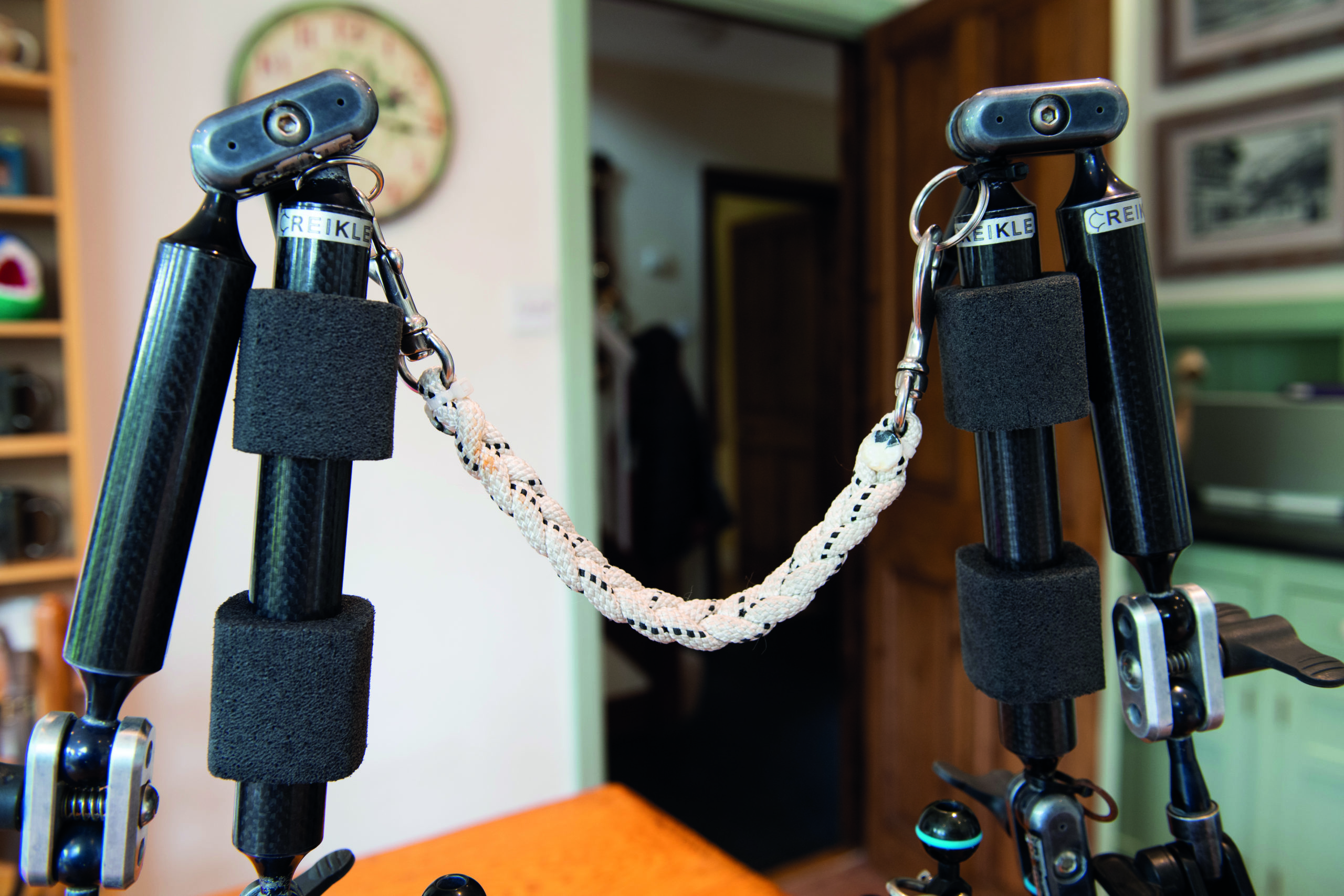
I have heavy strobes and arms on my camera rig, so I have a rope handle attached between the top joints of the arms making it easy for the rig to be carried and handed to me, and also lifted safely out of the water. The minute the rig is in the air, it becomes very heavy and the arms otherwise flop down with the strobes on the end, risking damage. The handle is also very useful when walking to and from the boat or shore.
When I get out of the water, the first thing is a quick camera dunk in the rinse tank. Never leave your camera there – firstly, its selfish and takes up room, and secondly, it could easily be bumped causing a leak or damage. I store the camera either securely on the camera table if available and it’s not too rough, or somewhere away from people on the deck in a safe position before drying it and moving it inside the camera room or cabin.
Anne and Phil Medcalf
When it comes to attaching our camera to ourselves, we both use a simple but effective solution, a bodyboarding leash tied to our lighting trays and strapped around a wrist. These are strong enough that if need be we can let go of our housings and let them dangle without them coming away even with a quite negatively buoyant camera rig. They also stretch long enough for our rigs to be out of our way when we do let go of them. This is handy when dealing with an issue.
For tasks like deploying DSMBs, we usually hook a strobe arm into the crook of an elbow or hold the housing between the knees.
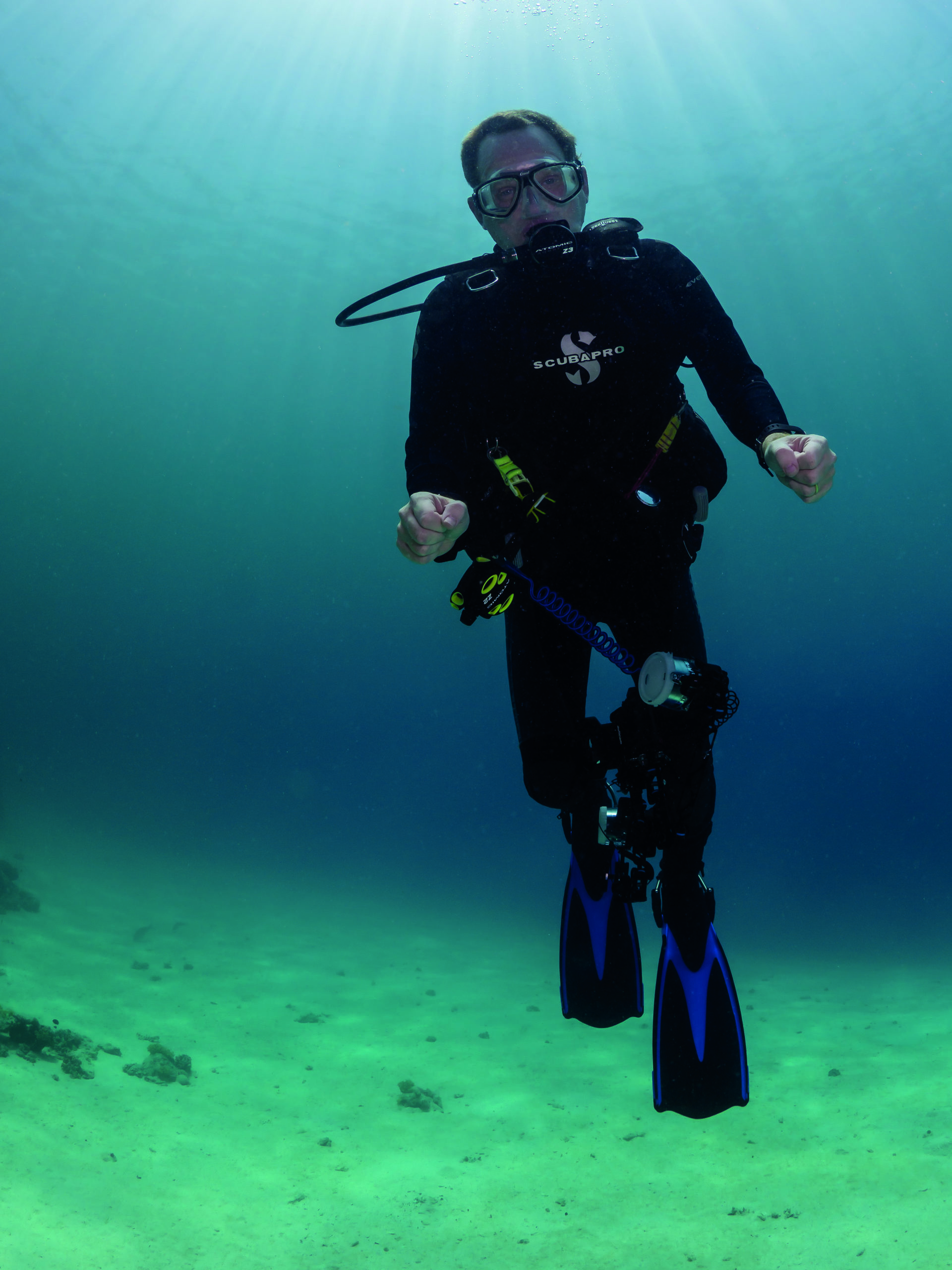
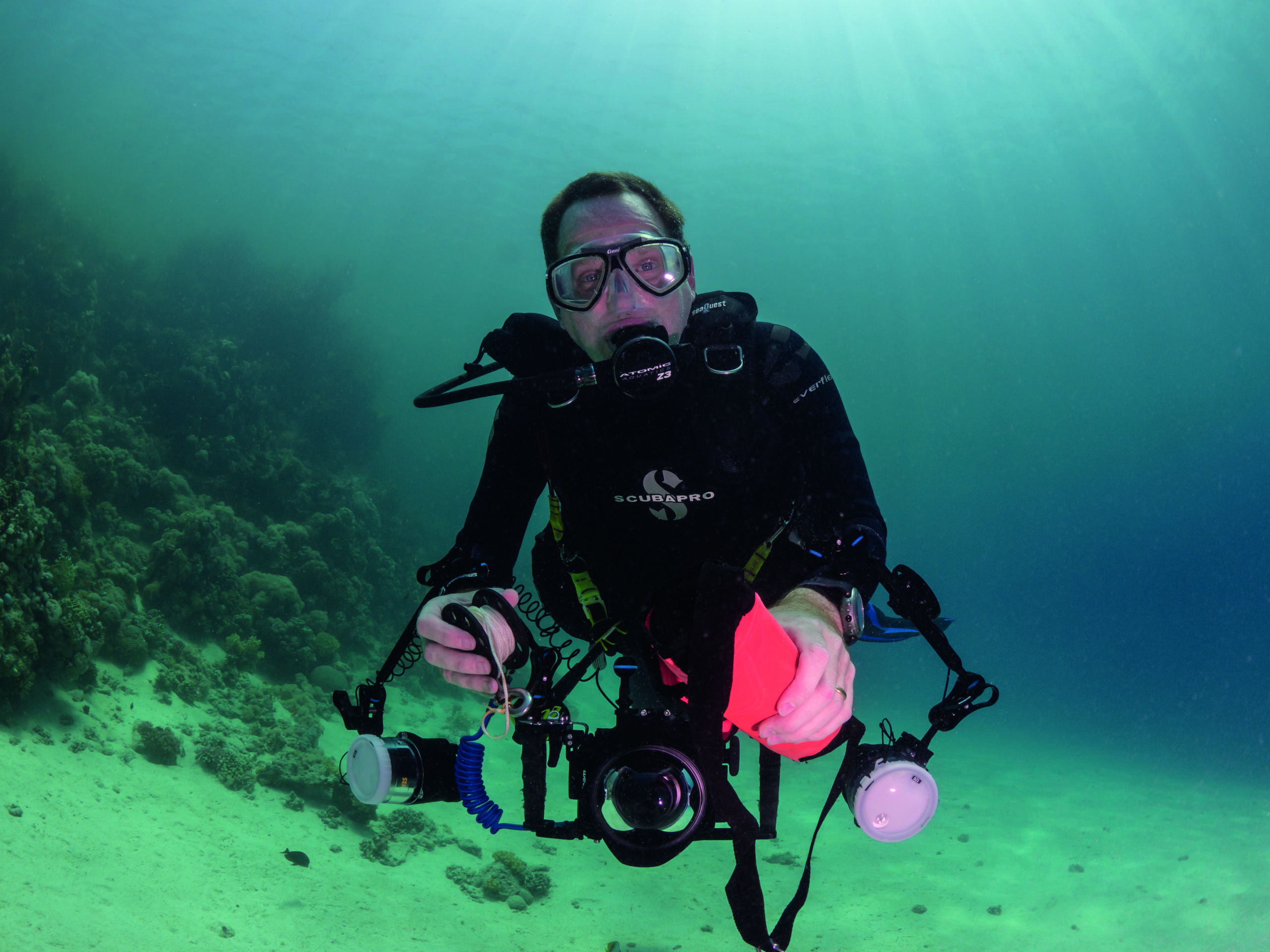
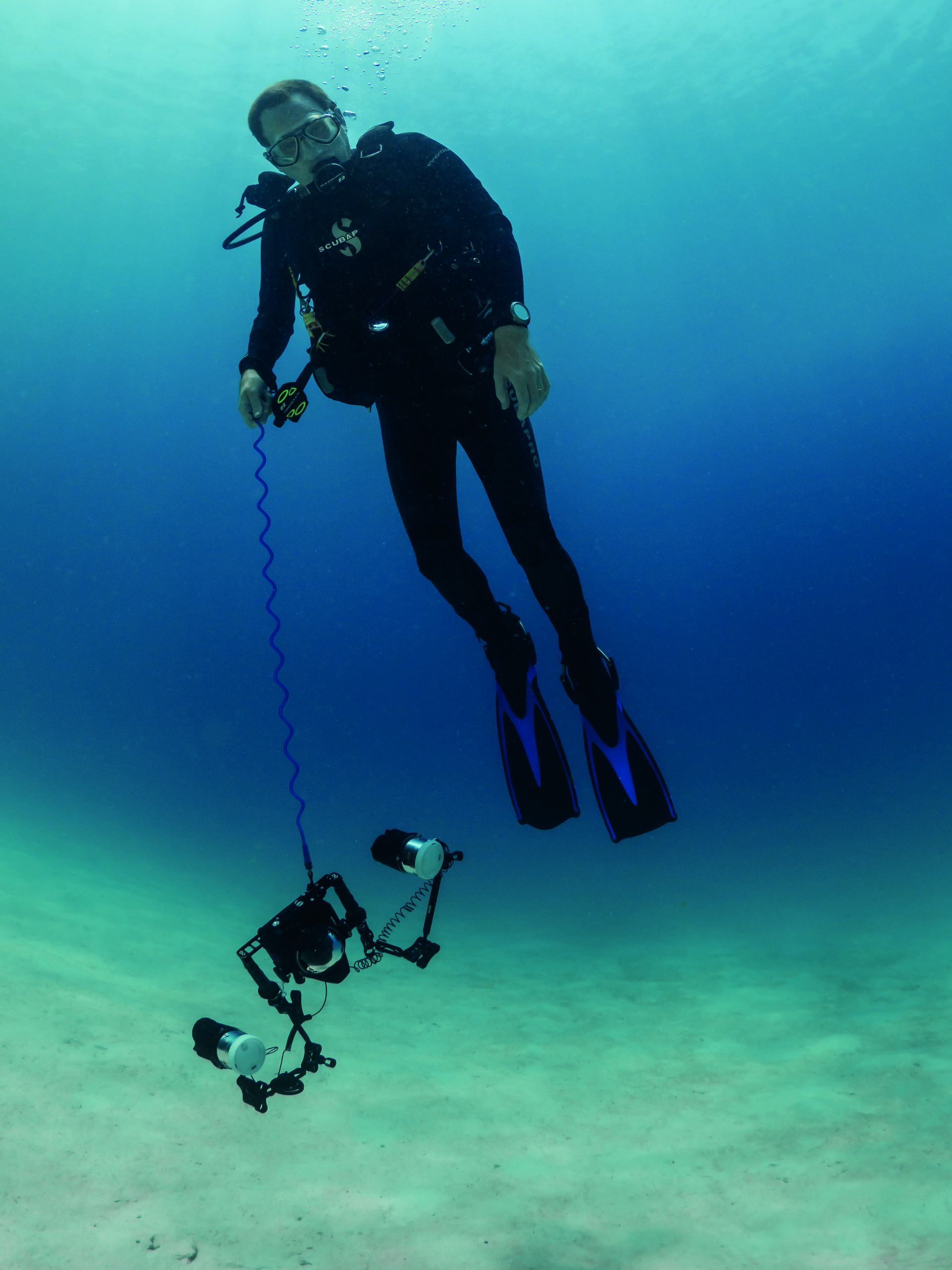
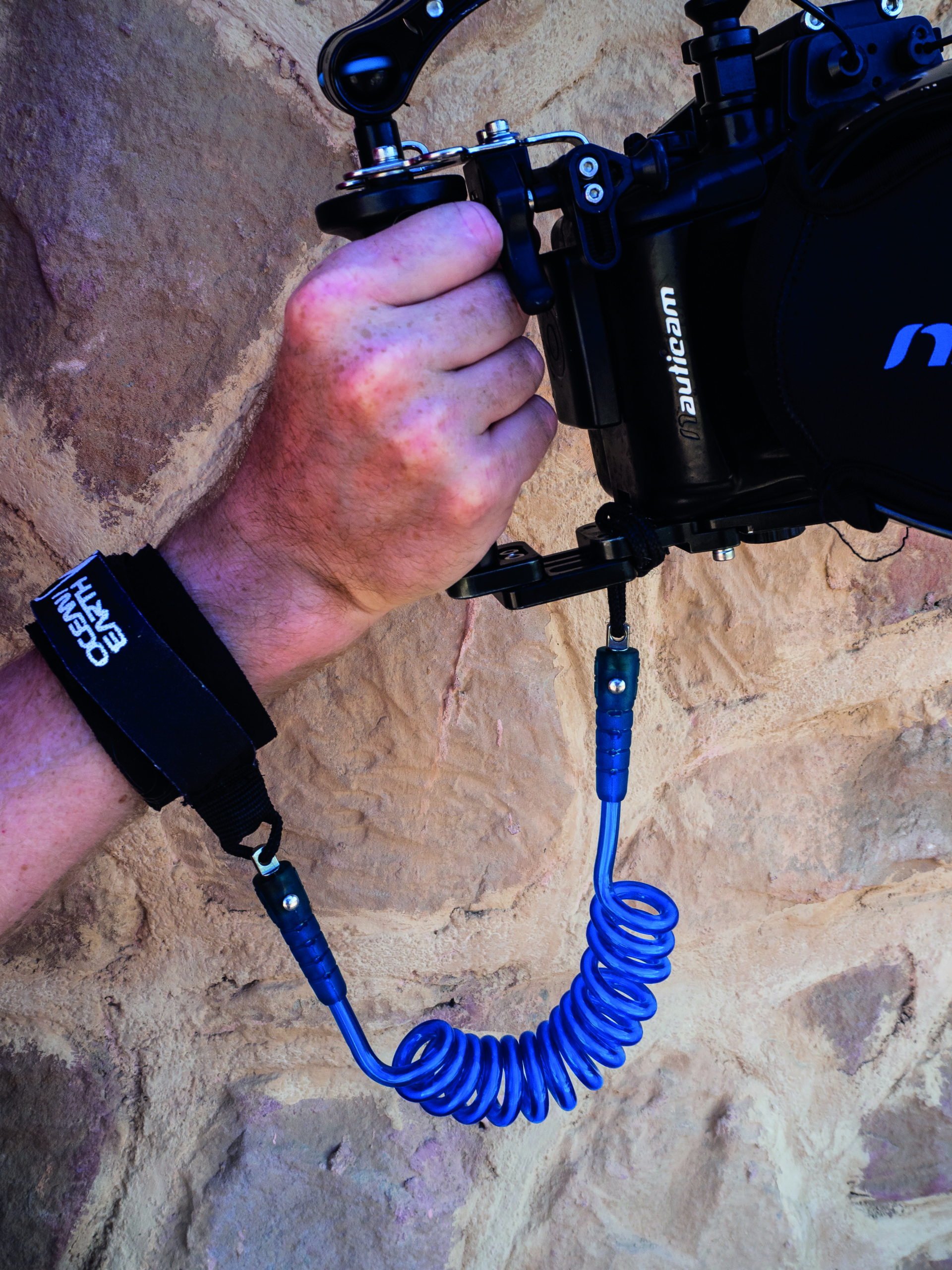
Getting into the water we hold our cameras rather than having them passed to us once we are in. Transferring the camera from a crew member to a diver is usually where fumbles occur and cameras can be lost or damaged. Not just when passed from hand to hand, but also when divers try to clip housings on to BCDs, failing to engage clips onto D-rings properly is common reason for a lost camera and can occur at the start or finish of a dive, especially when using a D-ring that isn’t clearly in your vision.
The advantage with using the bodyboarding leashes is you can attach it before you get in and it is constantly in vision. If you need to ditch your camera, it is easily accessible and quick to unfasten and when getting back into a boat, you can hand it up still attached to your wrist and wait for it to be physically over the boat before you undo it. Remember to explain this to crew before doing this, otherwise you may get your arm pulled as they go to put your camera somewhere safe.
Entering the water, we hold cameras above shoulder level for giant strides, this gives room for the impact of you entering to be dissipated before your housing hits the water. For backward rolls, hold the camera against your body with one hand and your mask and reg with the other.
When it comes to buoyancy, we keep our set-ups negatively buoyant and trim our weighting to allow for it. This is a matter of personal choice, and while it works for still photography, for videography it’s better to keep your set-up neutral to improve the steadiness of shots.
When back on the boat, retrieve your camera as quickly as possible from the rinse tank if it has been put in there. If it hasn’t, give it a quick rinse but don’t leave it unattended. The rinse tank is the graveyard of cameras. Scratches to ports and lenses are regular occurrences, as are floods caused by heavy rigs being dropped onto other housings.
Leaving a housing in a rinse tank can also result in floods from large changes in temperature. The water in rinse tanks on sunny dive decks can get very warm and when you then jump into the water, the materials of the housing can cool rapidly and the seal can fail.
Between dives, keep your camera somewhere safe and out of sunlight, such as your dive crate on a boat if you have one. For UK diving, a large cool bag or rubble bucket can be a good option, and be used for rinsing afterwards.
Paul Duxfield
First time I dived with a big camera rig, I was quite nervous and reticent about making a big splash.
So I’d get the camera rig handed down to me after first rolling or giant striding in. I had fears that the impact could cause some water ingress to the housing because of the extra stresses being placed upon it. Over time though, I’ve found that dilly dallying worrying about the camera rig could lose me a shot.
A case in point happened quite recently when dolphins made a fleeting appearance alongside the zodiac, and the driver took pains to put us in front of them as they passed by and all we’d see is tails, which with spinner dolphins is a real possibility.
I’m not slap dash about things though, so when back rolling from a zodiac, I keep the camera rig close to my body, with the strobe arms clamped down tight, so they don’t whack me or anyone else in the face. This way means I am protecting the camera rig with my body.
If giant striding I will also lock things down securely, put plenty of air in my jacket, and hold the camera aloft – it’s possible even with a bigger rig.
This will mean that the camera is barely breaking the surface, by the time me and my BCD have broken the fall, and I’ve done this thousands of times now with no issues.
Modern housings are pretty tough things, and if like me you have a housing with a vacuum pump warning system, then if there were any issues with a rapid change in pressure, I trust it would have alerted me before too much trouble had been done. I don't know this for sure, of course, because it’s never happened.
It’s also worth mentioning that I don’t use a fancy leash attached to my person any more, as a simple bungee around 18-inches long with a carabiner on both ends, that I picked up from a pound store, is all I now use. I can clip it off if needs be, and loop and clip it around my wrist on the dive.
Did I mention I’ve picked up a penny-pinching mindset now I live in Yorkshire!
Mario Vitalini
In all the years I’ve been diving, I’ve seen my fair share of camera floods. In most cases, the cause is poor O-ring maintenance, but occasionally a housing can flood when mishandled getting in or out of the water.
When entering the water, I always try to protect my rig from impacting the surface. Therefore, when jumping from a boat back platform, the easiest way is to leave the housing on the platform, and have it handed to you by someone else – especially if using a heavy system. I immediately secure a lanyard attached to my housing directly to my BCD.
When using a lightweight set-up, such a compact, I preferer to jump with it. I make sure my BCD is partially inflated to keep afloat when I hit the water and jump holding my housing rig with one hand high above my head.
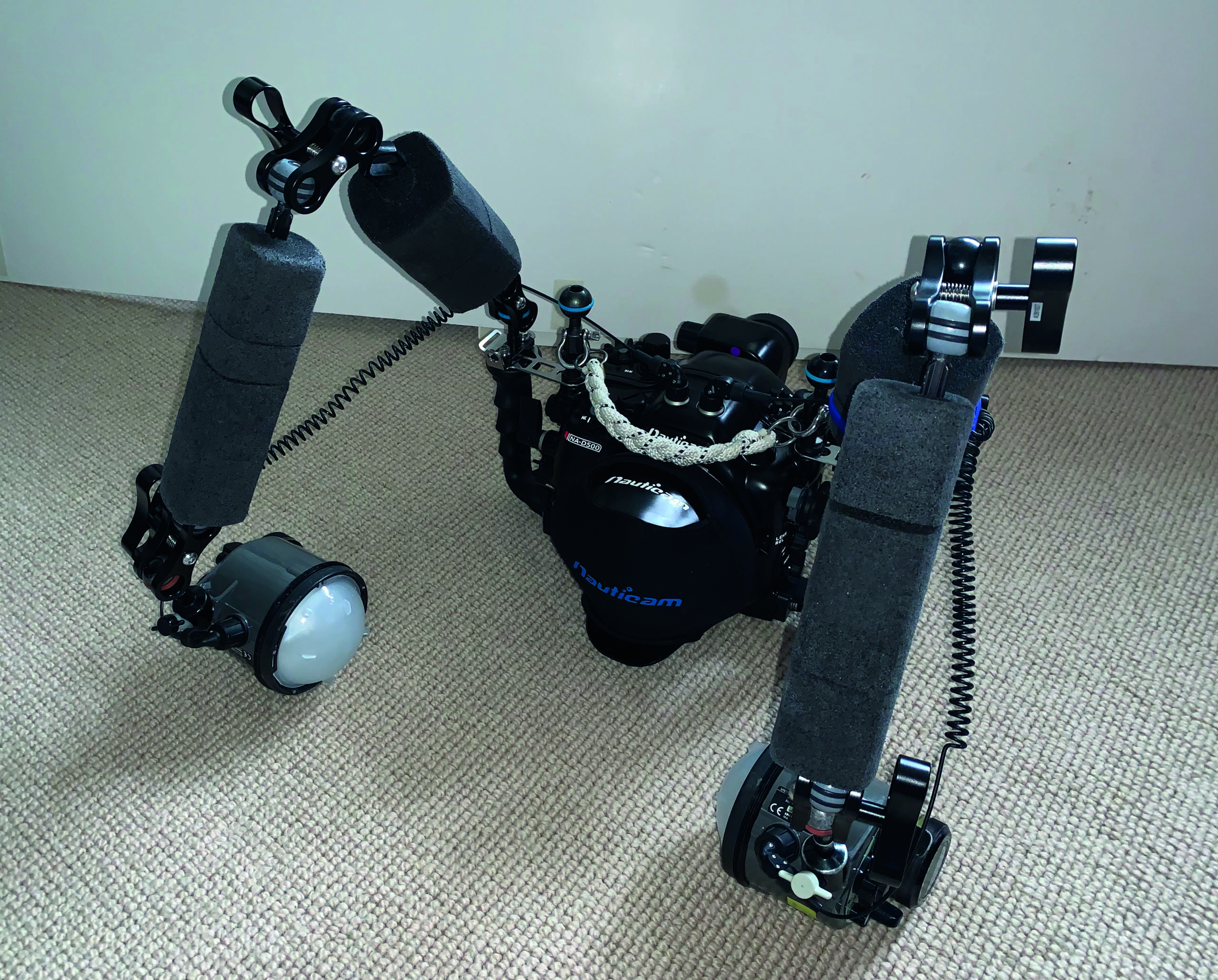
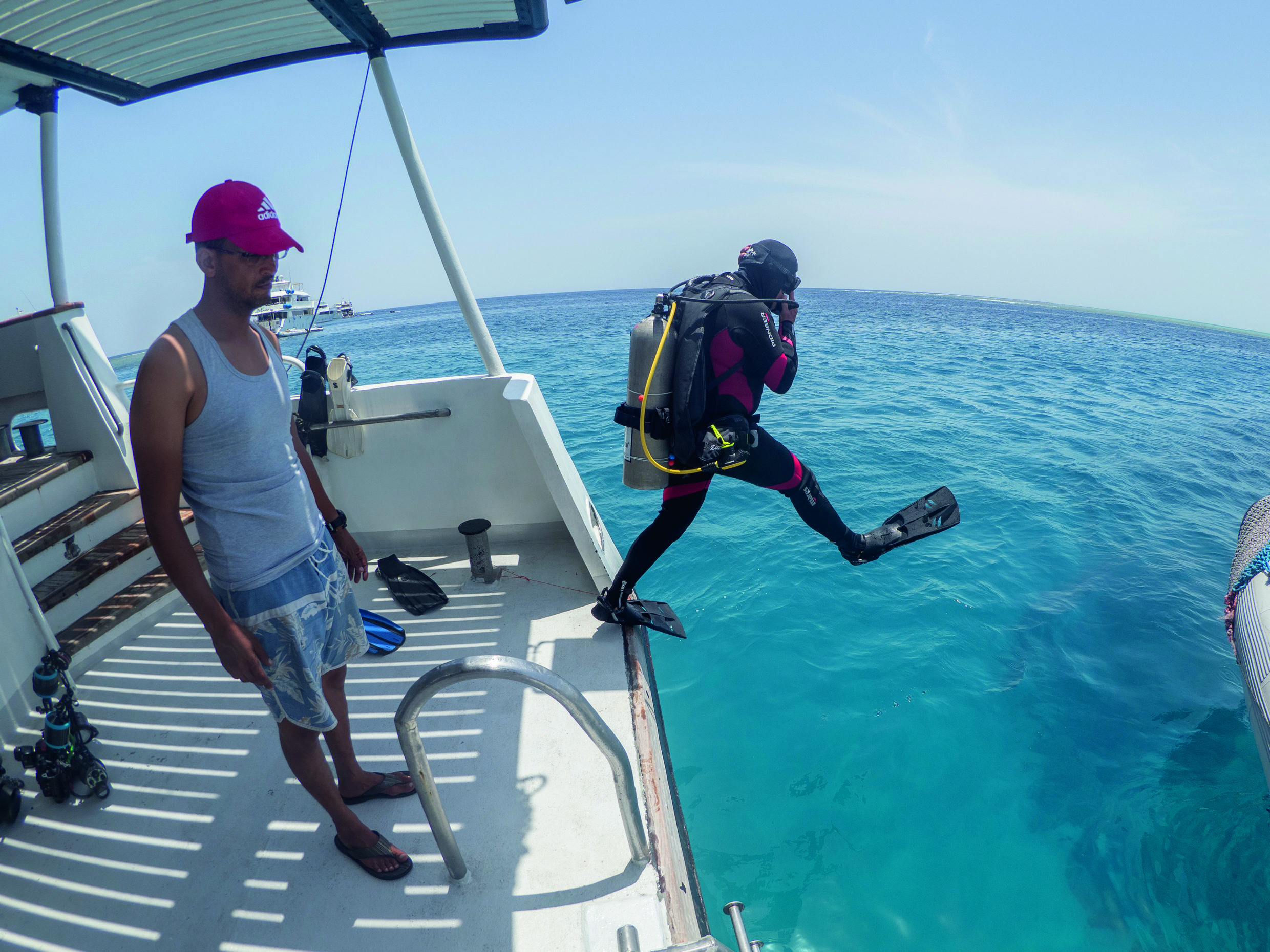
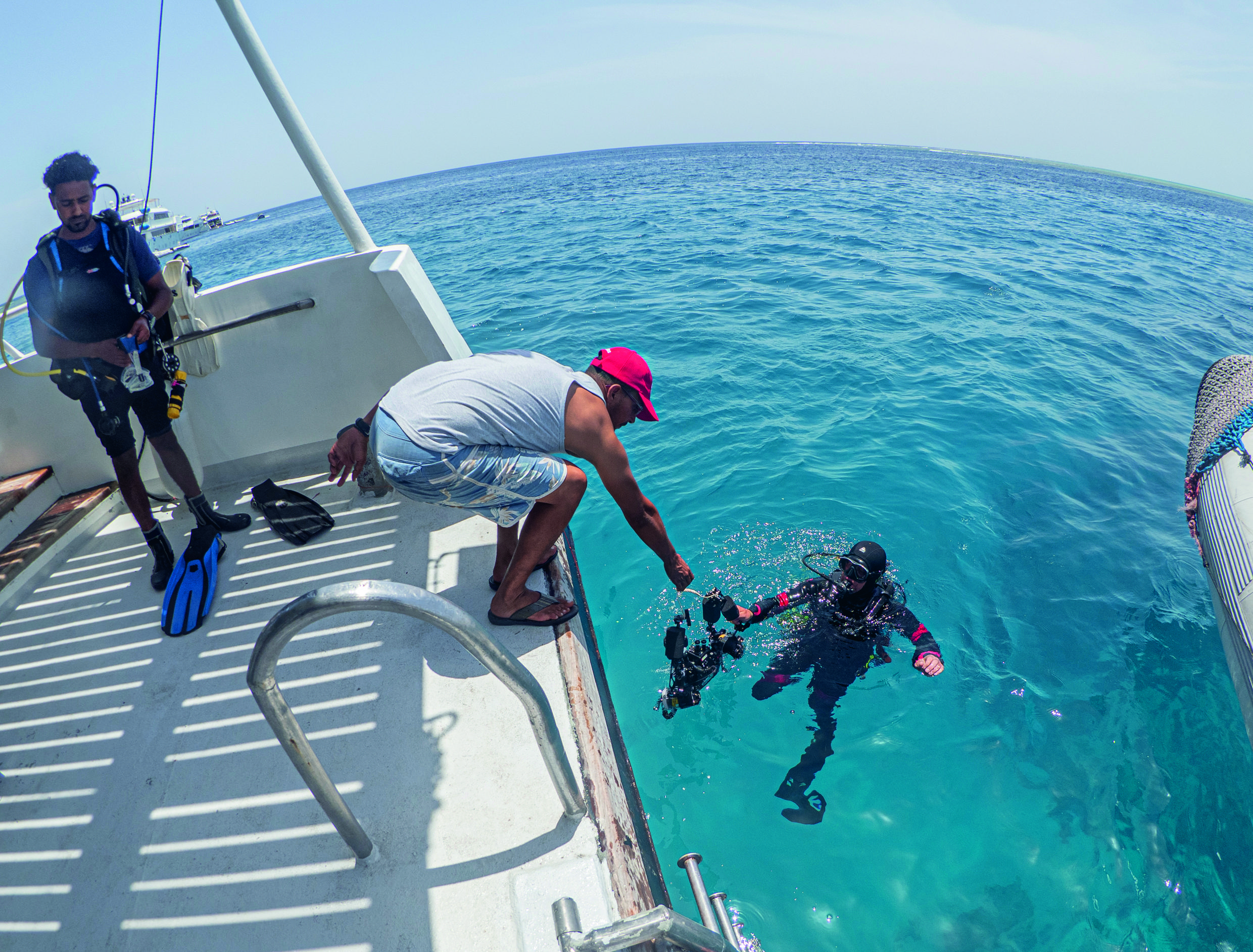
When diving from a RIB, I hold the housing tightly against your chest as you roll back. This is the best way when making a negative entry. If I have time to sort myself on the surface, I always prefer to have the housing handed to me by the zodiac driver.
After my safety stop, when I’m ready to surface, I fold the strobe arms in and protect my dome port with a neoprene or hard cover. On the surface, I hand up the camera first, only then unclipping it from my BCD.
Once on the boat, I dunk it in a rinse tank but never leave it, as other divers may throw in torches or other pieces of equipment that can damage your kit. If there are no rinsing facilities, I always make sure the housing stays wet or damp so the salty water does not dry and form crystals that can then damage the O-rings.
Onboard I make sure my housing is secure on a flat surface, such as the floor of the saloon, especially when the boat is moving. I often use the strobe arms to make the rig more stable.
Photographs by Martyn Guess, Paul Duxfield, Mario Vitalini and Anne and Phil Medcalf
